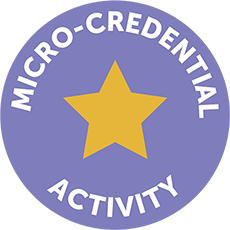Emerging Use Case Data Needs Protocol
Overview
Once your team has established a use case and a solution, it will be just the beginning of your data interoperability journey. Once you have successfully unified K-12 data and are able to make actionable decisions, appropriate district resources, and solve for your use case, your team will find that with much success come much responsibility. The use case for this year may be totally different next year; but do not worry, you have a system and team in place. Read this guide to complete the Emerging Use Case Data Needs 2.0 template found in your resource folder. Here you will define a protocol for emerging data needs to make your district’s use case sustainable over time
As your team prepares and plans for the implementation of your district’s use case solution, it will be important to also look towards the future. It is likely that in future years the needs of your district’s stakeholders will evolve, and changes will be required of your district’s use case solution. For example, a stakeholder may share that a data domain or data element would be helpful to have incorporated into your district’s use case solution. What will the process for reviewing and processing such a request be? In this activity, your team will develop a procedure for reviewing and incorporating emerging data needs into your district’s use case solution.
Developing an Emerging Data Needs Protocol

In this activity, your team will complete the following steps in order to successfully develop a protocol:
- Identify roles and responsibilities;
- Define the data need request process;
- Define the review protocol; and
- Document and implement the protocol.
Identify Roles and Responsibilities
Form a group that will be responsible for reviewing and making decisions on emerging use case data needs. This group could consist of team members that your district has been working with throughout this process or a different group of representative stakeholders. When building this group, consider including staff members who have context around your district’s use case, its data management, and data governance.
This group will have the following responsibilities:
- Responding to questions related to your district’s use case solution;
- Serving as the primary point of contact for emerging requests related to your district’s use case solution; and
- Making decisions around emerging data needs related to your district’s use case solution.

After selecting the members of this group, complete the table in the Emerging Use Case Data Needs 2.0 found in your resource file.
IGNITE Questions:
- To whom should a stakeholder bring their initial data request?
- In what format should that data request be for consideration?
- What information or context should the stakeholder provide regarding the request (e.g., value proposition, data domain/data element names)?

Define the Review Protocol
Now consider the process this review group will use when presented with an emerging use case data need or request. Use the following guiding questions to align on this process:
- Who will be responsible for convening the review group?
- How often will the review group meet to review data requests?
- What criteria will be used to consider data requests?
- How will the review group decide to either approve or deny data requests?
- How will the review group communicate their decisions to stakeholders?

Document and Implement the Protocol

After completing this template, finalize the data request and review process with the group identified in step #1. After finalizing both processes, record the processes and communicate them to stakeholders. In addition, ensure each process is accessible in either a hard copy or electronic format. Finally, implement and monitor both processes continuously to ensure success.